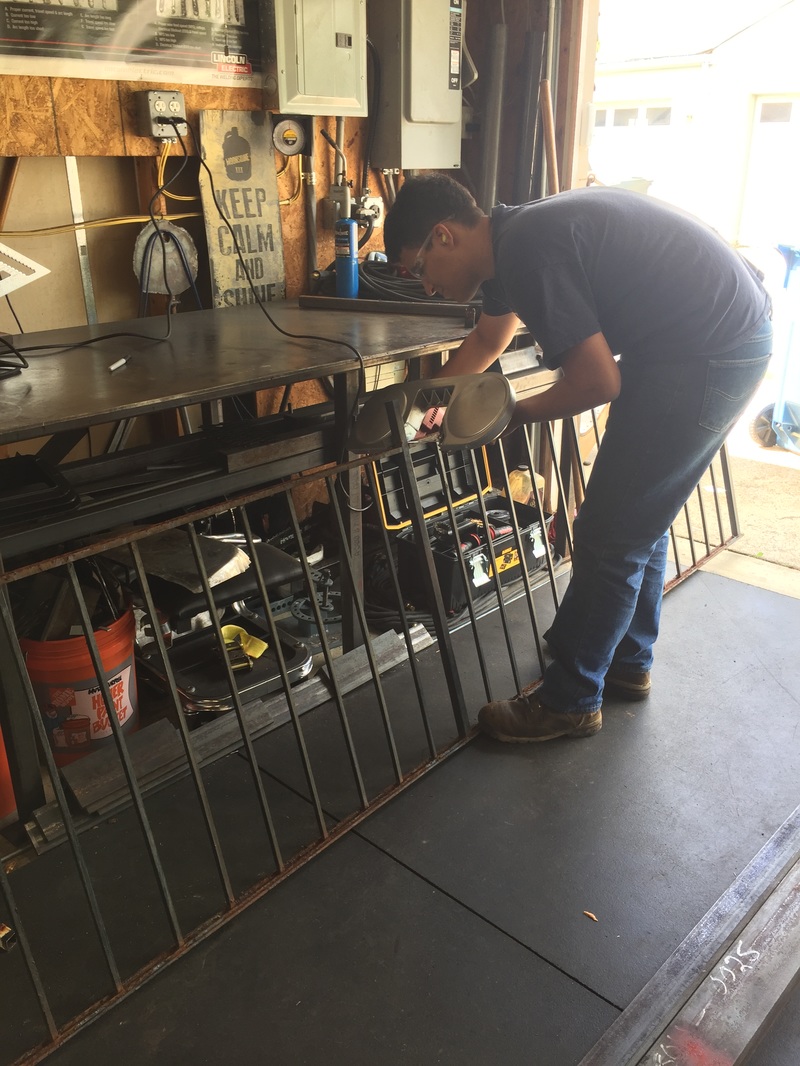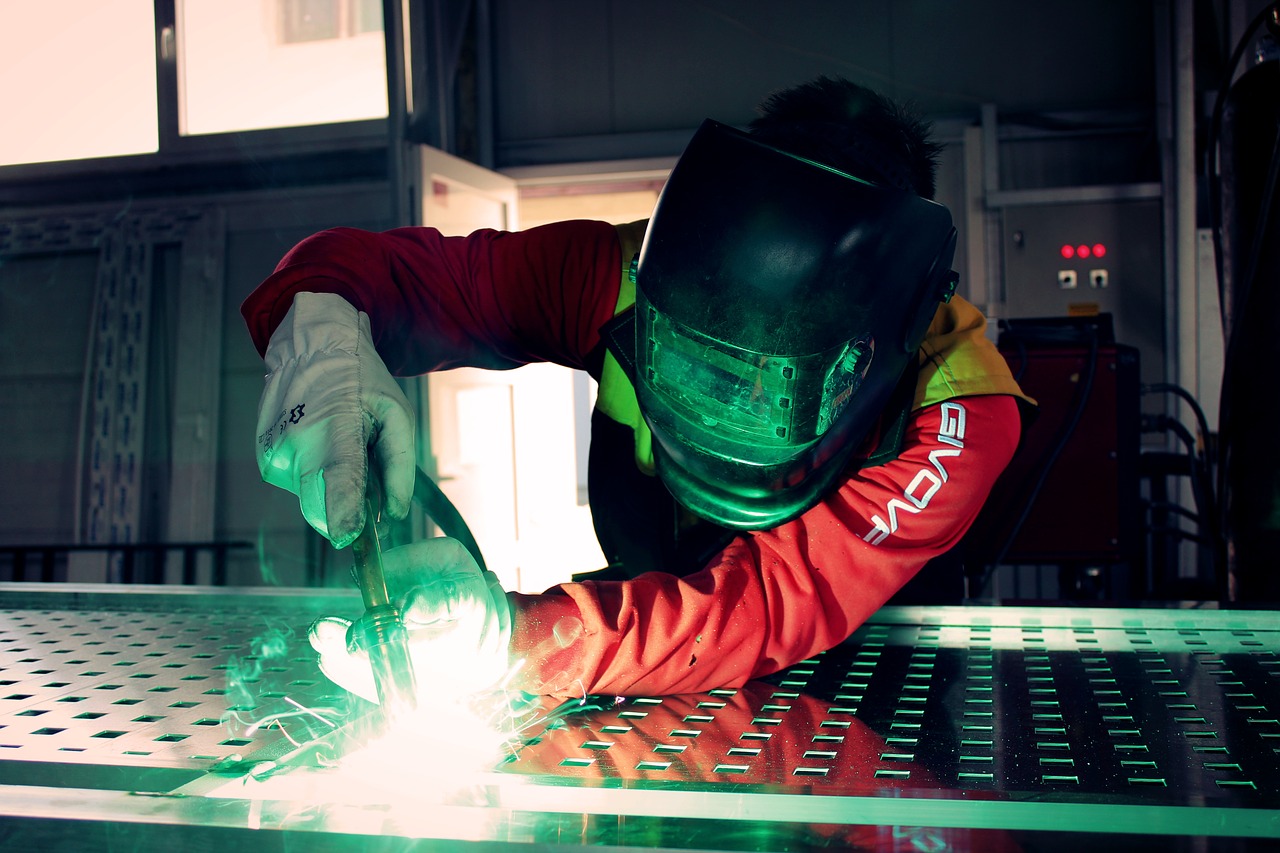What preheat methods can do for distortion prevention in Montana Mobile Welding and Repair Fabrication
Typical Welding Repair Work Issues and Just How to Address Them Effectively
Welding repair work usually encounter a series of issues that can endanger the integrity of the last product. Typical troubles consist of poor infiltration, porosity, and misalignment, to name a few. Each problem provides special difficulties that require particular techniques for resolution. Recognizing these concerns is essential for welders aiming to boost their outcomes and abilities. This discussion will check out these usual welding repair service problems and effective methods to resolve them.
Insufficient Penetration
Poor infiltration happens when the weld steel falls short to completely fuse with the base product, resulting in weak joints and possible structural failings. This issue typically stems from inadequate heat input, wrong electrode angle, or improper welding speed. Welders may experience poor penetration due to a mistake of the required specifications for a details material thickness or kind. Furthermore, contamination on the base product's surface can hinder effective bonding, aggravating the problem. To deal with poor infiltration, welders ought to ensure suitable settings on their tools and maintain a clean work surface. Regular inspection of welds is advised to recognize any kind of deficiencies early, permitting timely corrections and the prevention of compromised structural honesty in welded assemblies.
Porosity
Porosity is a common defect in bonded joints that manifests as tiny gas bubbles entraped within the weld metal. This defect can jeopardize the stability of the weld, leading to minimized toughness and possible failing under stress. Welding. Porosity commonly occurs from contamination, wetness, or improper welding techniques, which enable gases to leave into the liquified weld swimming pool. To resolve porosity, welders need to ensure correct surface area prep work, keep a clean functioning environment, and make use of ideal welding specifications. Additionally, selecting the right filler product and shielding gas can reduce gas entrapment. Regular evaluation and screening of welds can assist identify porosity early, guaranteeing timely rehabilitative actions are taken, consequently maintaining the high quality and integrity of the bonded structure
Imbalance
Imbalance in welding can occur from numerous elements, including improper configuration and thermal development. Recognizing the source is vital for effective resolution. Several adjustment methods are readily available to straighten parts and assure architectural honesty.
Sources of Imbalance
Welding misalignment often originates from a variety of underlying problems that can jeopardize architectural integrity. One primary reason is improper fit-up of components prior to welding, which can cause voids and irregular surfaces. Variants in thermal growth throughout the welding process can also cause distortion, specifically if the materials being signed up with have different coefficients of growth. Additionally, poor clamping and fixturing might fail to hold elements firmly in area, resulting in activity during welding. Badly conserved equipment, including welding machines and tools, might introduce variances in the weld bead, additional adding to imbalance. Finally, driver error, stemming from not enough training or experience, can also play a significant function in producing misaligned welds.
Adjustment Methods Offered
Attending to imbalance successfully requires a combination of rehabilitative methods tailored to the certain issues available. One common technique is the usage of jigs or components to hold elements in the proper setting throughout welding, making sure regular alignment. Furthermore, preheating the materials can help in reducing distortion and enhance fit-up. For significant misalignment, mechanical realignment strategies, such as making use of hydraulic jacks or clamps, can be utilized to fix the position prior to welding. Post-weld warmth treatment might likewise be necessary to alleviate stresses brought on by imbalance. Ultimately, cautious inspection and change throughout the configuration stage can avoid misalignment concerns from ending up being substantial troubles, advertising a smoother welding procedure and improving overall structural integrity.
Distortion
Distortion is a common challenge in welding that can emerge from numerous factors, consisting of irregular cooling and heating. Understanding the reasons for distortion is crucial for carrying out efficient prevention strategies. Resolving this concern not just improves architectural integrity yet likewise enhances the total high quality of the weld.
Reasons of Distortion
When subjected to the intense warm of welding, materials usually undertake changes that can bring about distortion. This phenomenon mostly arises from thermal development and tightening throughout the welding process. As the weld location warms up, the product increases; upon air conditioning, it gets, which can produce internal tensions. Furthermore, uneven home heating across a workpiece can intensify these stress and anxieties, resulting in bending or bending. The type of product likewise plays a considerable duty; metals with differing thermal conductivity and coefficients of expansion may react in different ways, leading to unpredictable distortions. Furthermore, bad joint layout and poor fixturing can add to misalignment throughout welding, increasing the chance of distortion. Understanding these causes is important for effective welding repair service and avoidance methods.
Avoidance Techniques
Efficient prevention methods for distortion throughout welding concentrate on regulating heat input and ensuring appropriate joint style. Maintaining a regular heat input assists to lessen thermal expansion and tightening, which can result in distortion. Making use of strategies such as preheating the workpiece can also lower the temperature gradient, advertising uniform heating. Furthermore, selecting proper joint styles, such as T-joints or lap joints, can enhance stability and minimize stress focus. Applying correct fixturing to safeguard the workpieces in position further help in maintaining positioning throughout the welding procedure. Staggered welding sequences can distribute heat a lot more equally, preventing localized distortion. By using these approaches, welders can substantially lower the likelihood of distortion and enhance the overall top quality of their welds.
Cracking
Splitting is a common concern come across in welding fixings, often arising from various aspects such as incorrect air conditioning rates, product option, or insufficient joint preparation. The event of cracks can significantly compromise the honesty of the weld, resulting in potential failings throughout operation. To check this site out resolve this concern, welders must initially evaluate the root causes, ensuring that products work and appropriately selected for the details application. In addition, managing the cooling price during the welding procedure is necessary; quick cooling can cause check tension and cause breaking. Appropriate joint layout and prep work also add to minimizing the threat. Applying these approaches can enhance weld top quality and longevity, eventually lowering the probability of breaking in completed weldments.

Insufficient Fusion
A substantial problem in welding repair services is insufficient blend, which happens when the weld metal does not effectively bond with the base product or previous weld passes - Montana Mobile Welding and Repair Belgrade Welding. This defect can cause weaknesses in the joint, possibly compromising the stability of the bonded structure. Variables contributing to incomplete fusion include not enough warmth input, improper welding method, and contamination of the surfaces being joined. To address this concern effectively, welders ought to guarantee appropriate pre-weld cleansing and surface area prep work, in addition to change their welding parameters to achieve appropriate infiltration and combination. Regular evaluation throughout the welding procedure can also help recognize incomplete combination early, permitting prompt corrective actions to enhance the total top quality of the weld
Overheating
While welding repairs can boost structural stability, overheating presents a significant challenge that can cause product degradation. Extreme warmth throughout welding can modify the mechanical properties of metals, leading to lowered toughness, boosted brittleness, and bending. This phenomenon is specifically crucial in high-stress applications where architectural dependability is extremely important. Identifying getting too hot can entail aesthetic assessments for discoloration or distortion, along with keeping an eye on temperature throughout the welding process. To reduce the risks associated with getting too hot, welders must employ appropriate techniques, such as controlling heat input, adjusting travel speed, and using more information suitable filler products. In addition, executing pre- and post-weld warm treatments can aid bring back product residential properties and improve the general high quality of the repair, guaranteeing long-term performance and safety.
Frequently Asked Inquiries
What Are the Usual Indicators of a Welding Defect?

How Can I Check My Welds for High quality?
To test welds for high quality, one can use visual inspections, ultrasonic screening, and radiographic approaches. Each strategy assures architectural honesty, recognizes issues, and confirms adherence to defined criteria, ultimately enhancing the reliability of the welded joints.
What Safety and security Precautions Should I Take While Welding?
When welding, one ought to prioritize safety by using appropriate personal protective equipment, making certain correct air flow, protecting flammable products away, preserving a clean workspace, and recognizing surroundings to stop accidents and injuries.
Can I Fix a Weld Without Remodeling the Entire Joint?
Repairing a weld without renovating the entire joint is possible, depending on the damage (Montana Mobile Welding and Repair Welding). Techniques such as grinding, adding filler material, or utilizing a welding procedure can successfully attend to certain flaws while maintaining the bordering structure
What Tools Are Crucial for Efficient Welding Fixes?
Necessary tools for reliable welding repair work include a welding equipment, cable brush, mill, protective equipment, clamps, and filler materials. Each tool plays a crucial role in ensuring high quality and safety throughout the repair service procedure. Porosity typically occurs from contamination, wetness, or inappropriate welding methods, which permit gases to leave right into the liquified weld swimming pool. Improperly conserved tools, consisting of welding machines and tools, may introduce disparities in the weld grain, more adding to misalignment. When subjected to the extreme warm of welding, materials frequently undertake modifications that can lead to distortion. Splitting is an usual problem encountered in welding repairs, typically resulting from various variables such as inappropriate air conditioning prices, material choice, or poor joint preparation. A substantial problem in welding repairs is incomplete combination, which occurs when the weld metal does not appropriately bond with the base product or previous weld passes.